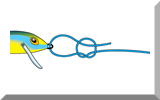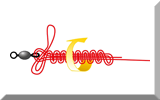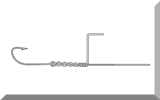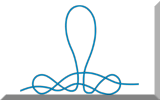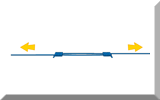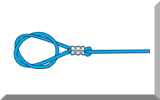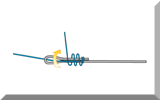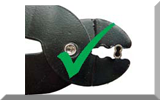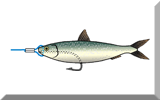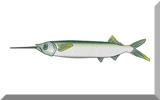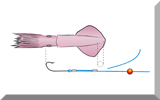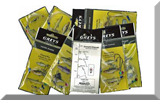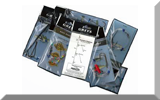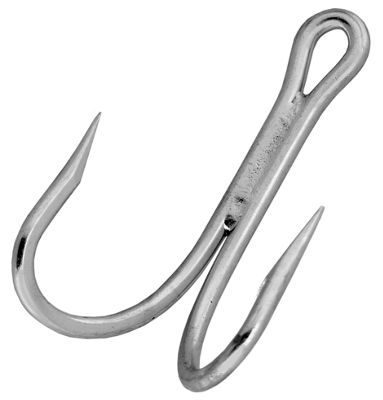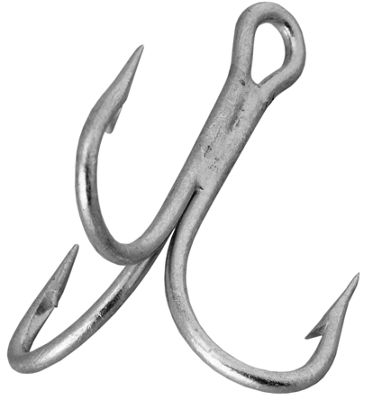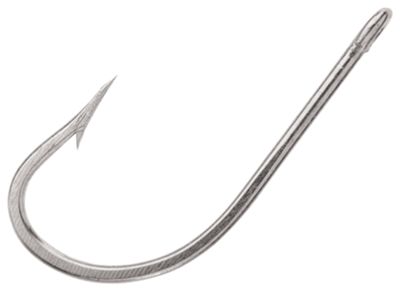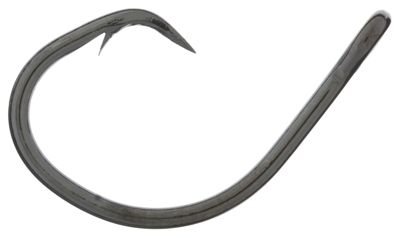The Various Types of Fishing Hooks Explained
The types of fishing hooks available to today's saltwater fisherman can be a little bewildering - for instance J hooks and C hooks (circle hooks) for bait fishing, and Z hooks, double hooks or treble hooks for lure fishing.
All have been designed with a specific purpose in mind, so if we're to maximise our hook-ups we need to know which hook type best suits our requirements.
Unsurprisingly perhaps, the types of fishing hooks that we should use depends largely upon the bait we're intending to put on it, or the lure we're going to attach it to.
First though, let's take a look at the most obvious fish hook design options - singles, doubles or treble hooks
Single Hooks, Double Hooks or Treble Hooks
The established hook size convention holds true for double and treble hooks. For example a size 2/0 treble hook is three size 2/0 singles brazed together, and a 4/0 double is two 4/0 singles brazed together.
Double Hooks
Double hooks are forged from a single piece of wire.
Their most common use is on skirted trolling lures, where they increase the chance of a hook-up without affecting the action of the lure.
They're also found on plugs, often as a replacement for the less robust factory-fitted treble hooks. But if you do this, always check that the lure's swimming action is still OK.
Treble Hooks
Treble hooks of course must be brazed together. A fortune awaits the man who can make a treble hook out of a single length of wire!
Treble hooks are used mainly on lures - particularly plugs, spinners and spoonsspinners and spoons - and also on pennel-tackle livebait rigs.
A treble hook is also often used as the trailing hook on a stinger rig where it will come as an unpleasant surprise to a short-biting fish.
Single Hooks
It's probably true to say that single hooks account for most of our fish catches, but there are several different types to choose from.
We're all familiar with the traditional J Hook - it's quite clear how that works - but the C (circle) hook What's that all about
And the wide-gaped Z hook with its cranked shank - how does that work
J Hook, C Hook or Z Hook
These are all single hooks, but there are some major differences between them ...
J Hooks
Short-shank, wide-gape J hooks are best for bulky baits like squid and peeler crabs. Small, fine-wire versions are the ones to use for live baits like prawns and sandeels. Viking hooks are a good example of these types of fishing hooks.
Long-shank hooks, particularly the fine-wire Aberdeen hooks, are perfect for threading on worm baits and dead sandeels. Another benefit of using these types of fishing hooks is that they make unhooking much easier - a valuable attribute for catch-and-release anglers.
A justified favourite of UK anglers fishing for the largest fish that inhabit our waters, the forged O'Shaughnessy patterns are perfect for fishing large baits for tope, conger eels, sharks and skate.
If you're a big-game angler trolling your lures or rigged baitfish offshore in tropical waters, then the Mustad 'Tuna Hook' pattern may well be the types of fishing hooks that you prefer.
C Hooks (or Circle Hooks)
The main feature of circle hooks is their inward-angled point, which gives the impression that they're unlikely to hook-up with anything at all.
And that's partly the intention. There's nothing worse than gut-hooking a fish. Not only does it cause the fish a deal of unnecessary suffering, but you'll not be able to recover the hook without killing the fish. But these hooks solve this problem.
If a fish completely engulfs a bait, taking the hook into its stomach, any tension on the line will pull it back into the fish's mouth, the inward point failing to catch on any internal part of the fish.
But when the direction of pull changes as the hook is drawn from the fish's mouth, the hook will secure a firm hold in the hinge of the jaw, from where it can be easily removed.
This makes circle hooks the hooks of choice for Catch and Release programmes - and ideal for use with the drop-back trolling technique.
Z Hooks (or Offset-Shank Hooks)
Another weird looking hook, the z-hook or offset shank hook. This one is designed to be used specifically with soft-plastic shads as shown below.
It's important that they are rigged with care, or they won't 'swim' convincingly. Here's the correct way to rig a plastic shad.
Rigged thus the lure can be used on a short snood where you may have otherwise used a muppet, or on a long flowing trace of a flying collar rig.
A favourite lure of wreck fishermen is this one.
Modified Z Hooks (or Wide-Gape Hooks)
These types of fishing hooks are also produced with an extra crank in the shank as shown on the left, for use with jellyworms.
Once again, it's important that they are rigged with care, or they won't 'swim' convincingly either. Here's the correct way to rig a jellyworm.
And this is what a correctly rigged one looks like.
Note that the hook eye projects from the front of the jellyworm, unlike a shad where it projects from the top.
These Z hook types of fishing hooks must be sized correctly for the lure - too small and you'll not get hooked up, too large and you won't get the opportunity for a hook-up! |
